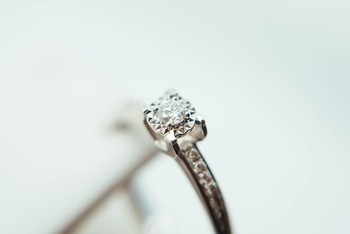
Source – unsplash.com
Family heirlooms rarely end up on the ‘chopping block’ but if you have a piece of jewelry that will simply collect dust, no matter how valuable or rare it is, you should consider selling it for a reasonable price tag. ‘Liquid’ money may be used for more practical purposes such as paying off debts and bills or simply to solve a particular issue. Not to dwell on a specific problem, but many people easily find themselves strapped for cash due to a whole battery of circumstances, so they could end up taking hasty steps to sell their jewelry, without a thorough assessment.
Some ground rules you need to adopt
Whether it is grandma’s vintage set or a diamond engagement ring you just want to get rid of, there are several ground rules you are required to follow if you want to get the best bang for your buck. First of all, you need to avoid local jewelry stores and immediate pawn shops if you are tempted to consider them for the sake of convenience. Second of all, you need to make peace with the fact that you will probably not break even on the original purchase or if it’s inherited, get the price tag which you consider appropriate.
On the other hand, your motivation might be to replace the jewelry with something that is in accordance to your tastes. In that case, fetching the best price for what you own determines the magnitude of the price difference either you or the retailer will have to pay. No matter what your end-goal turns out to be, you’ll have to do extensive research of reputable sellers that offer realistic prices.
Time-price dependency
Selling jewelry is a matter of time. If you do not have a date limit on your hands, you should be well advised to take it slowly. As it has been implied before, a hasty sale will almost universally translate to less money in your pocket. The less time you have the more limited your options become so give yourself at least three weeks to sell and take the necessary steps to do the research of the market and the vernacular that is used within the jewelry community.
Difference between an appraisal and a certificate
The first thing every owner of fine jewelry will want is to get as precise of an appraisal as possible, especially if you do not know where the diamonds came from. First of all, you should know the difference between an appraisal and a certificate. The appraiser scrutinizes the appearance and the quality of the diamonds before they establish its value depending on the current market trends.
After the conclusion has been made, the appraiser drafts a document that elaborates on the monetary worth of the diamond. Since the price given is pretty much a matter of ‘believing one’s word’ once you step out of the jewelry shop with an appraisal, it is absolutely crucial to find a reputable appraiser.
On the other hand, certifications require a significantly more nuanced process that considers both the external appearance of the diamond as well as its internal quality. In order to get precise results, the jewelry shop needs to employ the services of a highly specialized lab technician that will determine the diamond’s 4 C’s – cut, color, clarity, and carats.
What the carat/karat?
Carat and karat are two distinct words with the same root – they derived their name from the Arabic word ‘qīrāṭ’ and the Greek word ‘keration’ which refer to the ‘bean pod’ and a small weight. If we discuss carat, it is essentially the unit of diamond weight, which is around 200 milligrams – extremely useful to know if you want to sell a diamond or purchase jewelry as a gift. On the other hand, karat is used to determine the fineness of gold alloy or, if you will, a unit that determines the presence of the noble metal (gold, silver, platinum) in the alloy of a particular piece of jewelry.
If the ring or the jewelry set you are about to sell consists of both golden and diamond parts, this is a very useful distinction to understand. One karat is equal to 1/24ths of pure noble metal in an alloy. In other words, a nugget of jewelry that is assessed as 24 karat is 100% pure. For example, a 14 karat gold means that it is 14/24, or 58.3% gold, usually marked as having .583 purity. It’s actually fairly simple math once you understand the terms.
The whole point of assessing the jewelry is to fetch a fine price for what you’re selling. The last thing you want is to realize the value of what you’ve sold long after the fact. That sort of regret can be soul-crushing, especially if you could have used the money for some immediate practical purposes – like paying off a stack of bills or dealing with a mortgage. That being state, you do not need a reason to get what you deserve, according to an objective appraisal.

